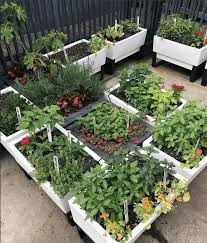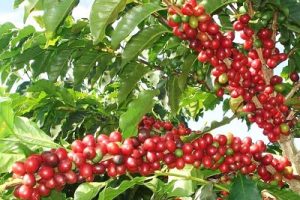
Urban gardening/agriculture has been used to describe the efforts of an individual or family growing food for personal consumption, mostly in urban localities, on land they own or alleyways to grow and harvest various fruits and vegetables.
Cognizant of the fact that urban agriculture/gardening is gradually evolving into a way of life in many cities, urban localities, and related geographical landscapes, Demeke Asmamaw, a university graduate in agricultural business (agribusiness) and working as a gardener around the Gola Michael neighborhood here in Addis Ababa, says, “Urban gardening is making substantial socio-economic and ecological contributions to the livelihoods of urban dwellers.
These advantages range from an increase in employment opportunities, alternative means of income, reduction of urban hunger and poverty, provision of fresh and healthy farm produce for urban dwellers, and the boosting of commercial activities in urban settings, as well as the creation of a very engaging and socially comprehensive harmonious society.”
“It is astounding to see the effects a small corner lot can have on a community, and collective farms have appeared in diverse environments where participants were likely to eat what they produced and see improvements in their health and well-being.”
Despite the increasing interest in supporting local community gardens, however, policymakers have to pinpoint specific objectives, activities, and target populations to promote the potential benefits of urban gardens on health and well-being.
Some people see gardening as a hobby or as a relaxing activity. The importance of urban gardening, however, goes far beyond the needs of the individual.
Urban agriculture can be a source of income for gardeners and reduce family food costs. Being in the neighborhood, the urban gardener can save the garden’s “customers” the cost of traveling out of the neighborhood for fresh fruits and vegetables.
They can also reduce healthcare costs by helping out in the garden for exercise and by encouraging gardening groups to plant the most nutritious foods possible (greens, carrots, squash, cabbage, cauliflower, etc.) in their geographic region.
A well-organized urban gardening collective can support the economic growth of lower-income communities by providing job training–not just for agricultural jobs, but also for personnel management, bookkeeping, communications, and so on.
Two key threats to health and wellbeing in crowded urban areas involve sewage and heat. Urban farmers help counteract these problems in at least two ways. By cultivating the land, they improve its ability to retain rainfall, preventing rainwater from overloading sewer systems and polluting waterways after a storm.
By introducing vegetation to predominantly cement-covered environments, they keep cities cooler. They also attract pollinators—especially bees and butterflies—to ensure another healthy, productive growing season.
By bringing fresh produce close to the homes of garden users, they reduce the amount of fossil fuel that is burned to transport fruits and vegetables over longer distances by truck, thereby helping to keep the air a little cleaner and prevent climate change.
Indeed, the removal of cross-cultural barriers is one of the many social effects of community gardening. People of various cultural backgrounds—and age groups and political persuasions—may discover through common food preferences or approaches to growing food—or simply by spending time with each other in the garden and sharing their life stories–that they have more in common with each other than not and may become more tolerant of each other and others like them.
The desire to transform decaying urban landscapes into fields of blooms and healthy produce has been expressed worldwide.
Companies can play a significant role in advancing community initiatives, particularly in the area of urban gardening, to revitalize urban spaces and foster community well-being.
They started with community gardens in neglected spaces, with the primary goal of creating “good neighborly relationships between the residents” of that town.
Urban agriculture, which raises awareness and brings nature into the city, obviously takes various forms. It can be professional or not, collective or individual, outdoor or indoor. It concerns all types of plants, but also the presence of animals in the city. Income from production makes it difficult to achieve sustainability of business models
Combining urban agriculture and productivity seems quite possible. Urban agriculture also reduces transport, packaging and storage costs through more direct access to the consumer. Some researchers argue that urban agriculture will become essential by 2050 to feed a world population that is 80% urban.
Despite the productive potential of urban agriculture, economic models based solely on the profitability of production are often fragile, for several reasons. Firstly, limited production volumes allow few economies of scale, and investment costs are high. In addition, the weak global production outlook is holding back certain innovation or industrialization initiatives that could allow a reduction in the price of investments.
The positive externalities of urban agriculture encourage the development of hybrid models While the ability to feed city dwellers may not be the basis of urban agriculture business models, the additional benefits it offers are driving the emergence of alternative models. Urban agriculture obviously provides direct economic benefits such as job creation and property development.
Certain obstacles to the development of urban agriculture, such as low production volumes, the reluctance of certain planners and the question of health risks linked to urban agriculture, still seem to weaken economic models based solely on the sale of production. At the same time, the growth of alternative models, taking into account the environmental and social benefits of urban agriculture, is confirmed with the support of public authorities and the involvement of companies and associations. It is therefore becoming necessary to find a balance between social and environmental benefits and economic viability of the models.
Globally, cities have become hubs for economic activity, productivity, and important platforms for achieving sustainable development goals. The potential of urban agriculture (UA) in improving urban local economies and urban micro-climate has been acknowledged in the literature.
It is necessary to do so because although UA is not the only way to deal with climate change and boost LED, it can be part of the numerous innovative ways that are springing up to help make the urban landscapes of most cities ecologically and economically sustainable. Also, the nexus between these concepts is in line with the sustainable city concept, which aims at a balance between economic development, environmental protection, and equity in income, employment, shelter, and basic services.
Urban agriculture is a common practice among millions of people all over the world. Urban agriculture can briefly be defined as the practice of growing, processing, and distributing plants and trees within and around urban areas. Generally, UA can broadly be seen to include all kinds of agricultural activities taking place in and around cities. This practice can also involve the rearing, processing, and marketing of livestock around the fringes of cities. Urban agriculture can take place in several places in urban areas, such as in gardens, public fields that are vacant, barns and cellars, and rooftops and field plots.
The practice has contributed immensely to the livelihoods of most low-income dwellers, particularly in developing countries, and its popularity is a result of the unique benefits gained by those who practice it.
It places a lot of importance on the activities that go on in cities, districts, and regions and combines economic and social development activities as well as urban planning and infrastructural development to improve local conditions.
With the gradual global shift by central governments from centrally driven economic development models to a variety of locally driven economic development models initiated by subnational governments.
Local government and individuals in local areas, by efficiently utilizing spaces in urban areas, can grow crops and other fresh farm produce as well as raise livestock or poultry and fish to help provide adequate food and more local employment opportunities in these localities.
This practice of cultivating crops and planting trees in cities can regulate the climate and help reduce climate change by releasing more oxygen into the atmosphere and removing the carbon dioxide that is released into the air by the sources that emit it and storing it in the trees and soil.
BY MENGESHA AMARE
THE ETHIOPIAN HERALD WEDNESDAY 2 JULY 2025





